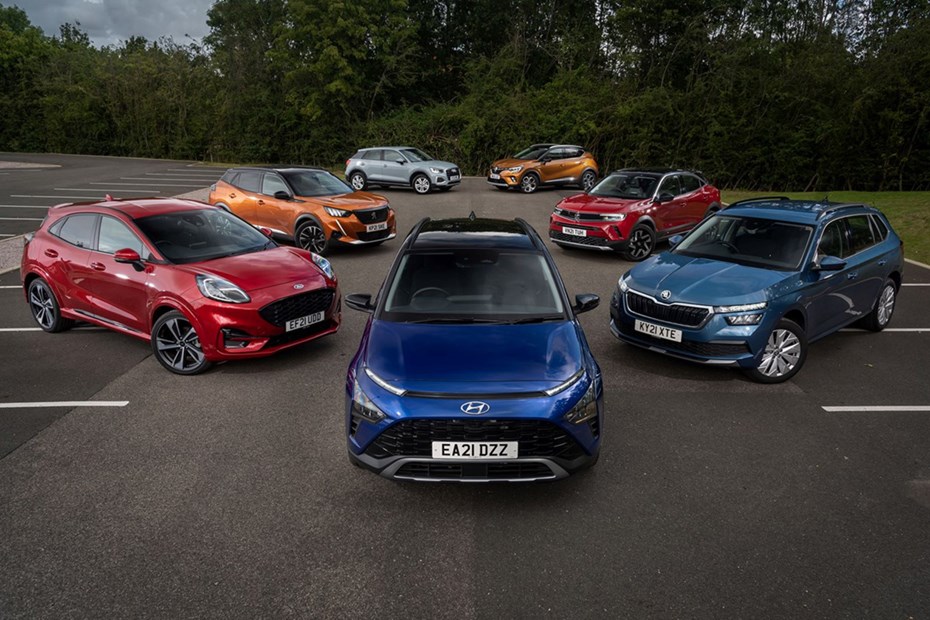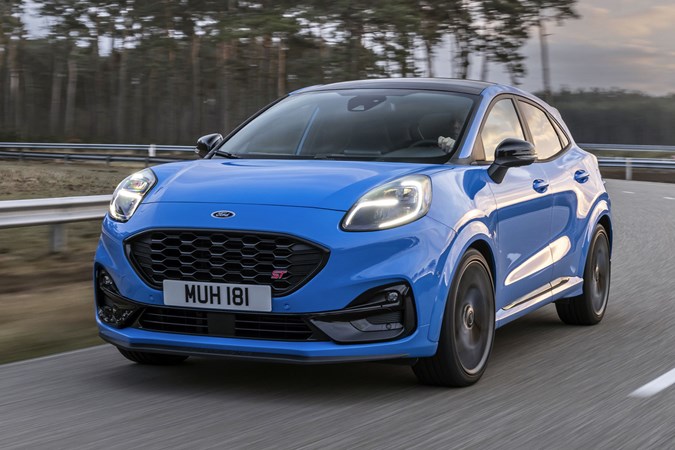Buying a secondhand car has become something of a marketing minefield, thanks to the concept of a ‘crossover’. This is particularly apparent in the world of used SUVs, which once implied rugged 4x4s with more family-friendly trim. The phrase SUV (sports utility vehicle) has become almost meaningless, as car designers have adopted the tall, chunky off-road aesthetic for everything from superminis to seven-seater large MPVs and people-carriers.
There are good reasons for the 4x4-derived shape and style taking over. Higher seating positions feel safer, so as pickups and refined off-roaders became popular, other drivers wanted to be on the same level. The raised seats mean less effort to get up and out of the car, or when lifting infants and small children into child seats. Finally, the visibility over hedges and parked cars (until all the parked cars became SUVs) is a benefit that passengers enjoy, not just drivers.
When buying a used SUV therefore, it’s worth thinking about what you consider an SUV to be. Is it a vehicle that combines off-road competence like a Land Rover, with agile on-road handling and long-distance comfort that traditional 4x4s like the Jeep Wrangler can’t come close to – or is it more like a regular family hatchback or estate, just with a higher ride height and some rugged styling touches?
Both definitions are right – but if you want the 4x4 and off-road skills of an archetypal SUV such as the Jeep Cherokee, a lot of recent models fall short.
Which used SUV is best?
To help you find the perfect used SUV this guide progresses through two groups: the first are focused on getting the best ride, handling and practicality with affordable running costs, and the second set offers the best off-road and adventure ability.
The best small SUV if you don't need 4x4
Our only real grumble about it is that the interior is a bit dull and lacking in finesse compared to some rivals, such as the MINI Countryman. But, otherwise, it’s a practical and enjoyable compact SUV that won’t break the bank, and many families will find it to be the only car they need. As a result, we gave it the Parkers best small family car award in 2023. There’s even a sporty 1.5-litre Puma ST version, which is ideal if you want something that’s more exciting to drive.
Read our full Ford Puma review
Pros
- Enjoyable to drive
- Sensible running costs
- Practical and comfortable
Cons
- Interior and infotainment is lacking
- Limited engine options
The best compact used SUV for families
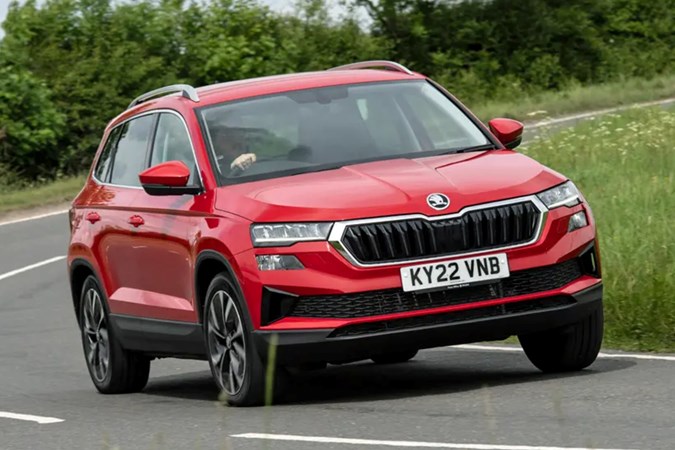

The comfortable, calm vibes continue in the cabin too. The Varioflex seating system is especially flexible for families, offering a larger fifth removable seat. What’s more, the careful choice of interior materials offer both practicality and durability.
Read our full Skoda Karoq review
Pros
- Comfortable
- Flexible rear seats
Cons
- No hybrid option
- 1.0-litre engine a little slow
An economical used SUV with style
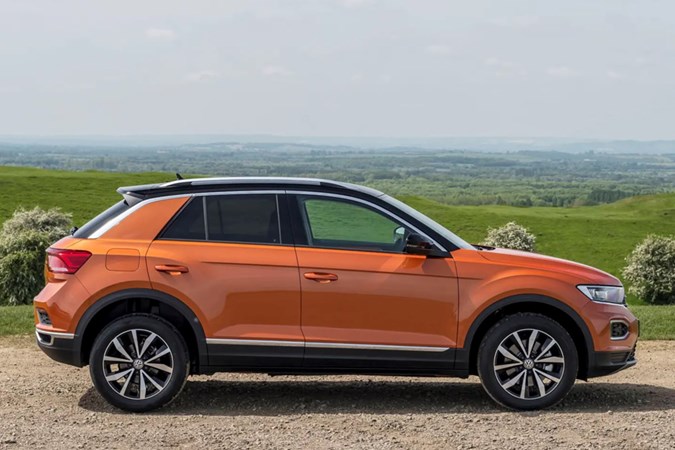

When Volkswagen updated the T-Roc in 2022, it ditched its aging 1.6-litre diesel engine in favour of the 2.0-litre unit used elsewhere across the Volkswagen Group. Like the Skoda Karoq, it’s available in two states of tune – the entry-level model has 115hp, while the flagship variant churns out 150hp. Both claim strong fuel economy figures, but the 115hp model is the efficiency champion, returning up to 60.2mpg under official WLTP conditions.
For a more in-depth look, read our Volkswagen T-Roc review
Pros
- Funky paint options
- Low running costs
- Comfortable
Cons
- Firm ride on large wheels
- Disappointing interior plastics
The best compact SUV for larger families
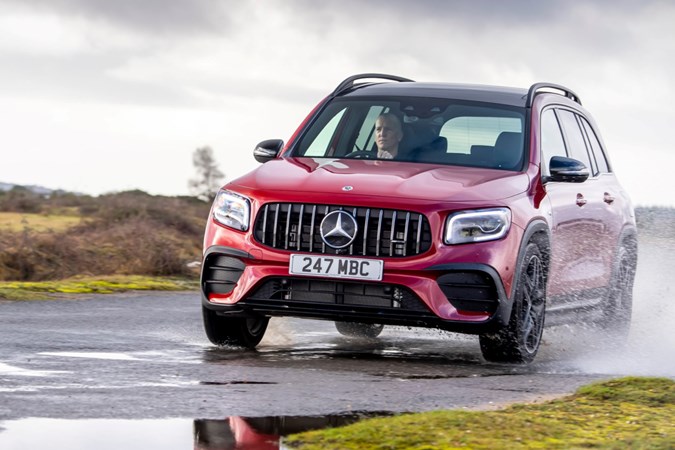

A broad choice of engines, four trim levels and pleasing agility—despite its greater weight and height—means there’s much to smile about in this family wagon. Combine that with the capacious rear space, stunning standard in-cabin tech and superb safety features and, two years on, the GLB earns its place here too.
Read our full Mercedes-Benz GLB review
Pros
- Well equipped
- Seven seats in a compact package
- Stylish interior
Cons
- Third row best left to kids
- Not as flexible as a traditional MPV
Stylish transport for those prioritising comfort over fun
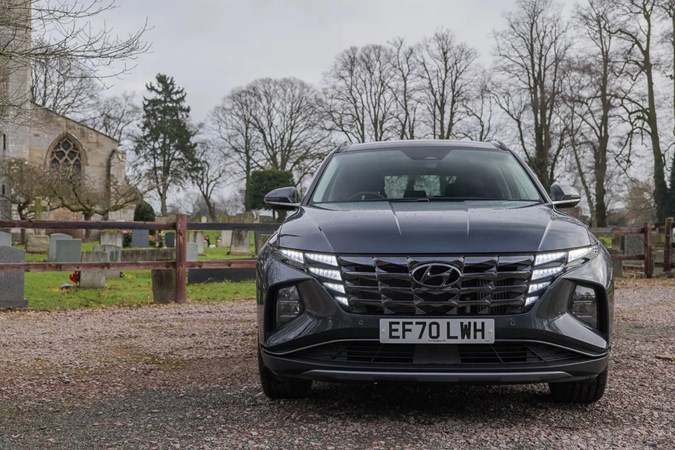

You can have it with a wide range of hybrid powertrains, too. The most affordable cars are fitted with mild hybrid petrol powertrains but, as you move up the Tucson’s pecking order, you’ll find self-charging and plug-in hybrid variants, the latter of which can drive for up to 31 miles on electric power alone. Just make sure you charge the PHEV variants regularly. Your fuel economy will tumble if you ask the 1.6-litre petrol engine to drag around the dead weight of the battery.
Read our Hyundai Tucson review
Pros
- Spacious interior and boot
- 2015-2018 2.0 can tow 2,200kg
- Excellent build quality
Cons
- Efficiency suffers on the motorway
- Adaptive suspension is pointless
A versatile and award-winning seven-seat SUV
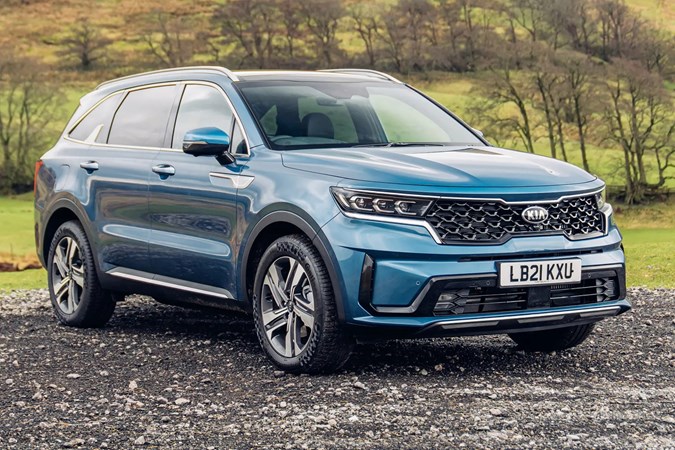

You can have a Sorento with a self-charging hybrid or plug-in hybrid powertrain, both of which are based on the same 1.6-litre four-cylinder petrol engine. The PHEV is a great choice, offering an easy 80mpg on shorter journeys and around 40–50mpg on longer runs. The self-charging hybrid is less efficient and less powerful which means it labours on faster roads as it relies more heavily on its petrol engine. It isn’t cheap, though. Prices start from £46,495.
Read our Kia Sorento review
Pros
- Flexible interior
- Great fuel economy
- PHEV great around town
Cons
- Expensive
- Limited model range
Ruthless hybrid efficiency and a ten-year warranty
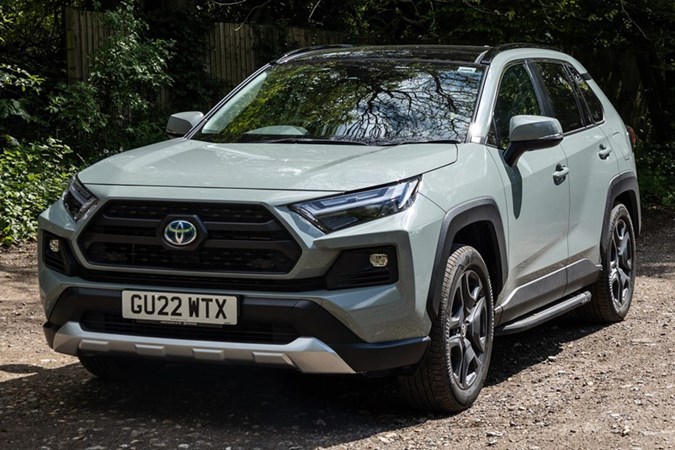

It’s worth mentioning that you’ll only draw near to that impressive fuel economy figure if you use the RAV4’s battery power as often as possible. However, even once you’re out of electricity, the hybrid system will still return upwards of 40mpg, which is impressive for a car of this size. If you don’t have a charging point at home, you can also have a self-charging hybrid version of the RAV4 which can also average upwards of 40mpg.
Read our Toyota RAV4 review
Pros
- Excellent fuel economy
- Fastidious reliability
- Industry-leading warranty
Cons
- It won’t excite keen drivers
- Quite expensive
Best small SUV for off-road driving
You don’t have to sacrifice much, either. The Duster may not get the very latest driver assistance tech, but most models have everything you need like air-conditioning, remote locking and an infotainment touchscreen with Apple CarPlay and Android Auto. You also get plenty of space – the Duster feels almost as big as the best family SUVs from the class above – and it's one of few small SUVs available with four-wheel-drive.
Read our full Dacia Duster review
Pros
- Amazingly good value
- Available with 4WD
- Practical interior
Cons
- More road noise than rivals
- Ride could be more settled
The icon reborn - now an excellent all-rounder
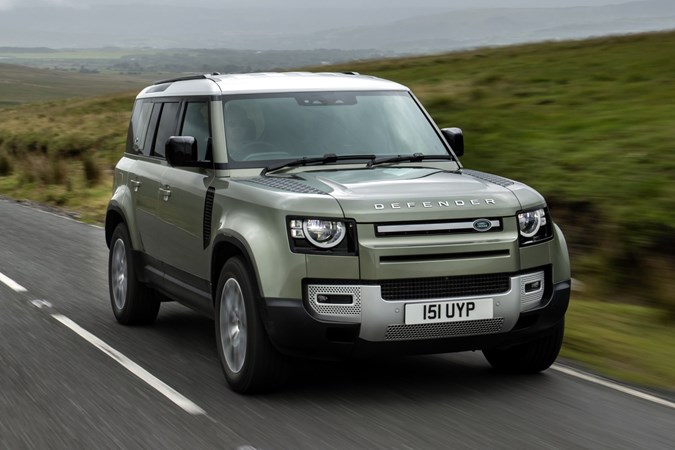

The Defender comes in three sizes – the 90 isn’t particularly practical due to its tiny boot and three-door bodyshell, but the seven-seat 110 and the ginormous 130 are great people-haulers. More rough and ready than Range Rover-badged products it’s nonetheless close to a luxury SUV for comfort.
Read our full Land Rover Defender review
Pros
- Unbeatable on the rough stuff
- Comfortable ride
- Rugged but plush interior
Cons
- Smallest 90 variant is impractical for families
- Big, wide and heavy
Strong foundations, weak residuals – a used 4x4 SUV bargain
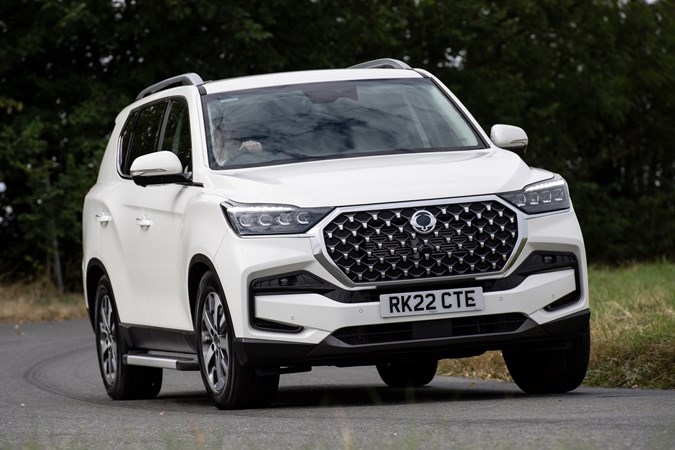

It's a seven-seater, though some specifications are five-seat with an immense boot, and is generally well-equipped and well made. The main weaknesses next to rivals are all about being the best new car – the Rexton has marginally less refinement, handling that does not mask the truck-like origins of the chassis, and a lack of depth in both the feel and weight of the controls and the interior finish and quality. These mean it can't compete with cutting-edge SUVs that cost twice as much new to be the best in classs – but it is amazing value for money if you want a strong 4x4.
As a used buy the Rexton is even better value. This is a car that costs under £20,000 for an average-mileage 2018 example. That budget will get you a Land Cruiser with twice the miles and at least five years older, or a Shogun Sport with more miles, worse economy, and less pleasant handling. The Rexton's 178hp diesel is strong and refined at speed, and many examples were sold with a long standard warranty which means an approved-used model should be a very safe purchase.
Read our full SsangYong (KGM) Rexton review
Pros
- Strong chassis
- 3,500kg towing capacity
- Generous specification
Cons
- Overlight steering
- Unsettled on poor roads
Are there any secondhand SUVs that should be avoided?
For families the simple rule is not to buy anything too old-school, such as Mitsubishi Shoguns or original Land Rover Defenders. They’re the cars that set the style, but they are unpleasant to drive in everyday traffic, with poor handling and brakes and extremely low limits of handling in emergency situations.
This extends to things like older Suzuki Grand Vitaras or the original Kia Sportage, where a scaled-down big 4x4 attitude didn’t get the softer, safer handling of a conventional car until the manufacturers developed all-new models to suit this growing market. For the same reasons we’d avoid lifted or modified examples of later SUVs.
We would also avoid very cheap examples of premium SUVs such as the Porsche Cayenne, VW Touareg or Range Rover and Range Rover Sport – particularly non-turbo V8 Cayennes, early L322 (2002-2012) Range Rovers, and any Land Rover/Range Rover with the 2.7-litre V6 diesel. While these cars can be a lot of fun for enthusiasts, they’re a terrible choice if you just want a car to use and pay someone else to maintain.
Finally – steer clear of modern SUVs with all-wheel drive that have been maintained badly. Red flags include mismatched tyres, scuffs on the sills and bumpers, towbars (particularly with cheap electrics rather than proper CANbus adaptors and factory-fit wiring/brackets) and cars which have come up for sale locally right after floods. Models such as the Honda CR-V, Kia Sportage and Hyundai Tucson need their transmission fluids changing if driven through deep water.
Which used SUVs are reliable and cheap?
As a rough guideline, manufacturers from Japan, Korea and Thailand – such as Mitsubishi, Suzuki, Honda, Daihatsu, Nissan, Toyota, Subaru and SsangYong – made the first good crossover-type SUVs, and these are the ones that survived long enough to become cheap, reliable used SUVs.
The Toyota RAV4 defined the genre, but pioneers such as the Suzuki SX4, Daihatsu Terios and of course, the first Nissan Qashqai and X-Trail feature robust, easy to use 4x4 systems (often electronically engaged and fully decoupled when driving in good conditions), compact space-efficient bodies, and secure car-like handling.
Older examples of these can often be great value – you could spend as much on a timing belt and gearbox service for a mid-2000s Range Rover Sport as you could buying a 4x4 RAV4 of the same age outright, and that wouldn’t cover the finance deposit on their new equivalents.
Remember how much you’re saving, and put a little bit back into your used SUV. Get the fluids changed, the underbody rustproofed, and don’t be afraid to replace tired radiators, hoses and coolant before a problem arises. Money planned for maintenance could mean months of low-cost motoring, rather than an unexpected big bill.
Are there any good electric or hybrid used SUVs?
Yes! Though it’s very important to check the monthly cost, interest rate and deposit of a new model before taking on a newer used SUV.
Top of the list here is the plug-in hybrid Toyota RAV4 mentioned already, but you could also consider a Kia EV6, Tesla Model Y or Audi e-Tron if you want a high-end fully electric SUV. We’d be more cautious about a used Jaguar i-Pace, though it is temptingly affordable secondhand.
For the best used hybrid SUV at an affordable price, look for a Lexus RX. For newer models and a larger budget it’s worth considering models from BMW and, if on an approved-used scheme, Land Rover’s Range Rover Sport P400e or Discovery Sport P300e.
Just so you know, we may receive a commission or other compensation from the links on this website - read why you should trust us.


